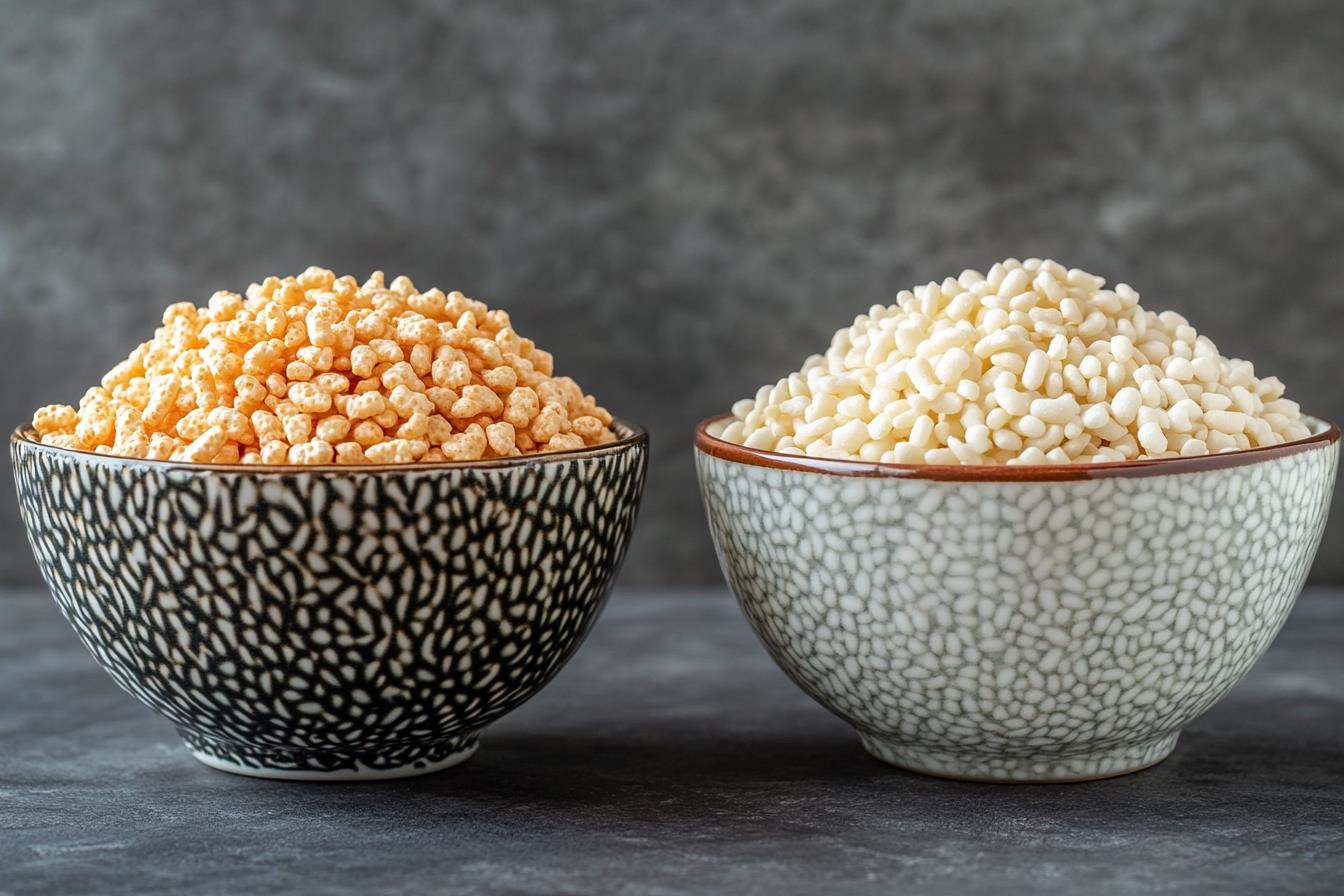Rice Krispies and puffed rice are both beloved components of meals and snacks worldwide. While they may seem interchangeable at first glance, they differ significantly in their ingredients, preparation methods, and cooking applications. This article delves into these differences, uncovering their unique qualities, nutritional aspects, and uses. So, if you’ve ever wondered, Are Rice Krispies just puffed rice?, you’re in for a treat.
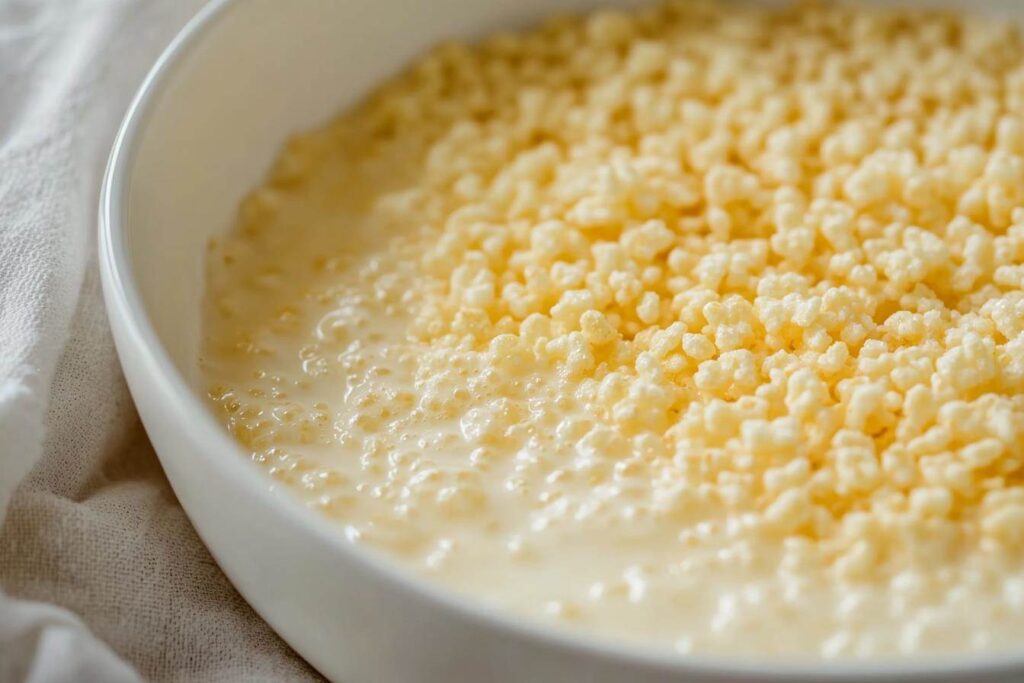
Understanding Rice Krispies and Puffed Rice
What Are Rice Krispies?
Rice Krispies, a widely popular cereal made by Kellogg’s, are more than just puffed rice. Manufacturers craft Rice Krispies using crisped rice, a combination of rice and sugar paste that is cooked and toasted to achieve their signature light, crispy texture. Famous for their iconic “snap, crackle, and pop” sounds when paired with milk, people often enjoy them as breakfast or a snack.
Rice Krispies are designed for mass appeal, balancing taste, convenience, and nutrition. They’re fortified with essential vitamins and minerals, making them a staple in many households. Additionally, their adaptability in recipes, like Rice Krispies Treats, elevates their popularity.
What Is Puffed Rice?
On the other hand, puffed rice is a traditional food created by heating rice grains under high pressure, which causes them to puff up like popcorn. Many cultures widely consume it as a snack, using it in dishes like bhel puri in India or seasoning it simply with salt and spices.
Unlike Rice Krispies, puffed rice is a straightforward product—essentially just rice. It’s lighter in texture, less sweet, and often liked for its natural flavor. Puffed rice is celebrated for its simplicity, often becoming a go-to for those seeking low in calories snacking options or a quick addition to salads and soups.
Are They the Same?
While they share some similarities, Rice Krispies and puffed rice are clear in their preparation, taste, and usage. Rice Krispies involve added sugars and toasting, which enhances their flavor but also increases their calorie count. On the other hand, puffed rice is minimally processed, retaining its natural rice taste.
For a detailed dive into the manufacturing process of Rice Krispies, check out How Rice Krispies Are Made. It’s fascinating to see how a simple grain transforms into something so versatile!
Composition and Ingredients
What Are Rice Krispies Made Of?
Manufacturers carefully craft Rice Krispies to provide a perfect balance of crunch, taste, and nutritional value. This popular breakfast cereal may seem simple, but it features a complex blend of ingredients that enhance both flavor and shelf life. Let’s break down what makes this cereal so unique.
Primary Ingredients
Crisped rice, the primary component of Rice Krispies, comes from milled rice combined with sugar paste. Manufacturers cook, shape, and toast the rice to create its signature light and crispy texture. They also enhance the flavor by adding small amounts of salt and malt flavoring. Additionally, Rice Krispies are fortified with vitamins and minerals, including iron and B vitamins, which cater to the nutritional needs of users.
These additional ingredients contribute to the cereal’s delightful taste and make it a fortified breakfast option. However, the inclusion of sugar and malt flavoring distinguishes Rice Krispies from plain puffed rice, giving them their unique profile.
Nutritional Information
In a standard serving size of Rice Krispies (1 cup or about 28 grams), you’ll find approximately:
- Calories: 110
- Protein: 2g
- Carbohydrates: 25g
- Sugars: 4g
- Fat: 0g
- Dietary Fiber: 0g
While low in fat and fiber, Rice Krispies are a source of essential vitamins and minerals. However, the added sugar content may raise concerns for those monitoring their sugar intake. It’s important to consider portion sizes and pair the cereal with healthier additions like fruits or nuts.
What Is Puffed Rice?
Puffed rice, On the other hand, is an unadulterated form of rice that undergoes minimal processing. Its simplicity lies in its production process, which retains much of the rice grain’s natural characteristics.
Production Process
The process begins with raw rice grains, which are subjected to high heat and pressure. The rapid expansion of moisture within the grains causes them to puff up, creating a light, airy texture. This traditional technique, widely used in many parts of the world, requires no added sugars, salts, or flavorings.
In industrial settings, puffed rice is made using modern machinery that allows for consistent size and texture. The result is a product that’s versatile and free from additives, often used in savory snacks or desserts.
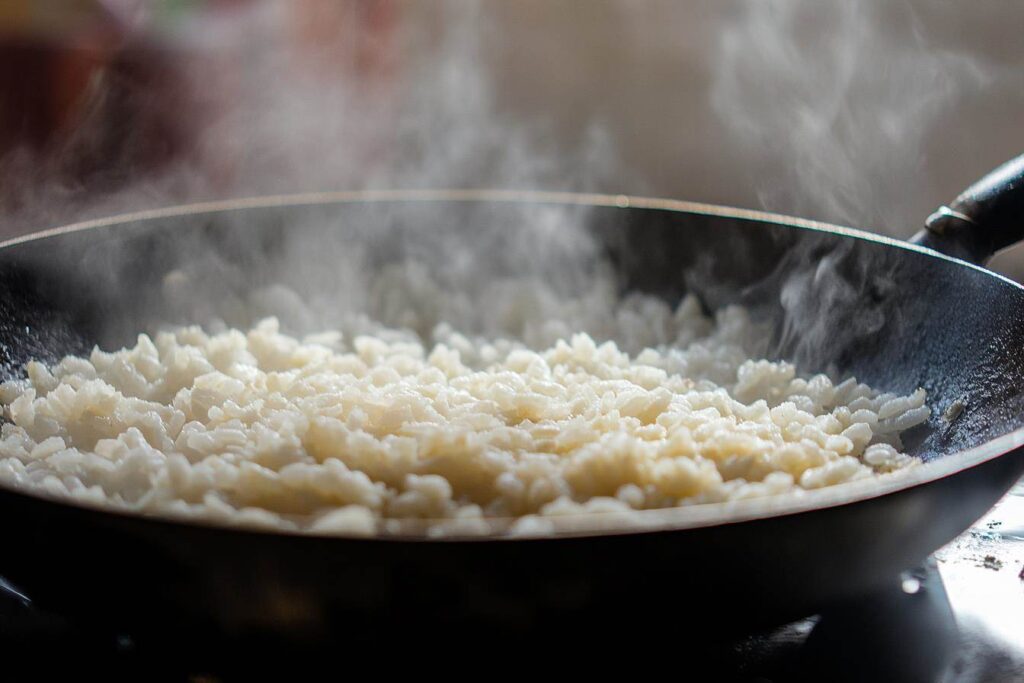
Nutritional Profile
A 1-cup serving of puffed rice (approximately 15 grams) contains:
- Calories: 50
- Protein: 1g
- Carbohydrates: 12g
- Sugars: 0g
- Fat: 0g
- Dietary Fiber: 0g
People celebrate puffed rice as a low in calories option, making it an excellent snack for weight management. However, its low fiber and protein content often lead to pairing it with ingredients like nuts, seeds, or yogurt to enhance its nutritional value.
Next, we’ll explore the production processes behind Rice Krispies and puffed rice in greater detail. You’ll be amazed at how each product is brought to life!
Differences Between Rice Krispies and Puffed Rice
Texture and Flavor Differences
When it comes to texture and flavor, Rice Krispies and puffed rice offer clear sensory experiences. Though they share a rice-based origin, their preparation methods and added ingredients create noticeable differences.
Taste Comparison
Rice Krispies boast a subtly sweet flavor, thanks to the addition of sugar and malt flavoring during production. This mild sweetness makes them versatile for both breakfast and desserts, such as Rice Krispies Treats. The fortified vitamins and minerals also lend a neutral, slightly toasted undertone that pairs well with milk or other toppings.
Puffed rice, on the other hand, is simpler in flavor. With no added sugar or flavoring, it carries a natural, earthy taste reminiscent of plain rice. This makes puffed rice a popular ingredient in savory dishes like bhel puri or as a standalone snack when seasoned with spices.
Texture Analysis
The texture highlights the key difference between these two products. The toasting process gives Rice Krispies their signature crisp and crunchy bite, which holds up well when paired with milk, softening only gradually over time.
On the other hand, puffed rice offers a light and airy texture that almost melts in your mouth. Its delicate structure fits perfectly in snacks and mixtures, providing a subtle crunch that enhances the dish without overpowering it. However, unlike Rice Krispies, puffed rice quickly loses its crispness when exposed to moisture.
Nutritional Differences
Nutritionally, Rice Krispies and puffed rice offer unique benefits, but they also highlight some trade-offs. The inclusion of additives and sugars in Rice Krispies significantly impacts their caloric content and overall profile compared to the simplicity of puffed rice.
Caloric Content
A standard serving (1 cup) of Rice Krispies contains about 110 calories, while the same amount of puffed rice has just 50 calories. The higher calorie count in Rice Krispies stems from added sugar and flavoring ingredients, making them less suitable for low in calories diets.
Puffed rice, with its bare-bones preparation, is a low in calories alternative, often favored by those looking for light snacks or additions to meals. However, it lacks the added vitamins and minerals found in fortified cereals like Rice Krispies.
Added Sugars and Additives
One notable difference is the sugar content. Rice Krispies contain approximately 4 grams of sugar per serving, which enhances their sweetness and appeal to children but may raise concerns for those monitoring sugar intake. Manufacturers also add malt flavoring and salt to enhance the flavor.
On the other hand, puffed rice has no added sugars or flavorings, making it a pure and natural option. However, this simplicity means it lacks the fortified nutrients present in Rice Krispies, potentially making it less appealing as a standalone breakfast choice.
Uses in Culinary Applications
Culinary Uses of Rice Krispies
Rice Krispies are a versatile ingredient that can elevate a variety of cooking creations, from breakfast to dessert. Their crisp texture and mild sweetness make them a staple in households and professional kitchens alike.
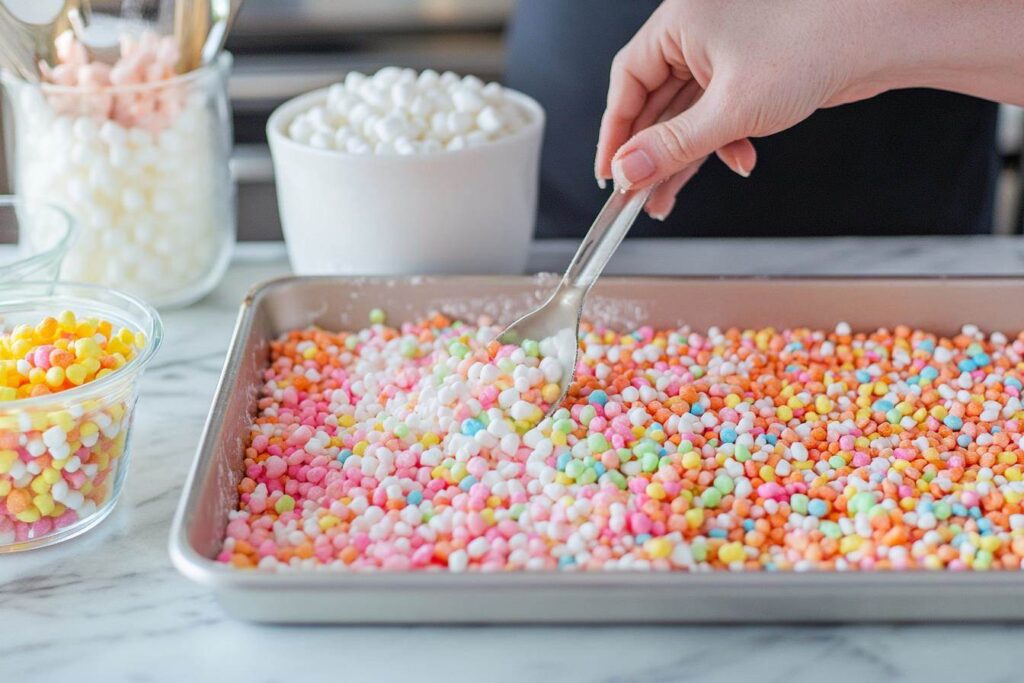
Popular Recipes
The most iconic dish featuring Rice Krispies is undoubtedly Rice Krispies Treats. This simple yet beloved recipe combines melted butter, marshmallows, and Rice Krispies into a gooey, crunchy dessert. These treats are easy to make, endlessly customizable, and perfect for parties or school lunches.
Additionally, people often use Rice Krispies as a crunchy topping for casseroles or as breading for chicken and fish. Their neutral flavor pairs well with both sweet and savory dishes, making them a pantry must-have.
Snack and Dessert Applications
People frequently use Rice Krispies in no-bake desserts like energy balls or chocolate bark. Their light texture delivers a enjoyable crunch that complements other ingredients without overpowering them. For snacks, individuals often mix Rice Krispies with dried fruits, nuts, and honey to create healthy cereal bars.
Their ability to absorb flavors while retaining crunch makes them a favorite for creative snacks like peanut butter balls or holiday-themed treats.
Culinary Uses of Puffed Rice
Puffed rice shines in both traditional and modern cooking settings. Its airy texture and subtle flavor make it an excellent base for a variety of dishes.
Traditional Dishes
In South Asia, puffed rice is a cornerstone ingredient in dishes like bhel puri, a savory snack mix featuring puffed rice, tamarind chutney, and veggies. People also use puffed rice to make murmura laddu, a sweet treat crafted with puffed rice and jaggery.
Across cultures, puffed rice often serves as a staple for light meals, particularly in soups or broths. Its quick preparation and adaptability make it a favorite in traditional kitchens worldwide.
Modern Snack Applications
In contemporary cooking, puffed rice is a trendy addition to granola mixes, yogurt bowls, and salads. Chefs use it to add a delicate crunch to dishes like sushi or gourmet desserts. health-focused recipes increasingly feature puffed rice, combining it with nut butters, seeds, and honey to create wholesome, low in calories snack bars.
Its simplicity allows for endless experimentation, whether you’re spicing it up for a savory snack or sweetening it for a dessert twist.
Health Considerations
Health Benefits and Concerns of Rice Krispies
Rice Krispies may be a breakfast favorite, but they’re not without their nutritional pros and cons. While they bring certain benefits to the table, it’s essential to consider their overall dietary impact.
Fortified Vitamins and Minerals
One of the standout features of Rice Krispies is their fortification with essential vitamins and minerals. A single serving typically contains added iron, B vitamins (like folic acid and niacin), and vitamin D. These nutrients help support energy production, red blood cell formation, and overall immunity, making Rice Krispies a convenient choice for families aiming to meet daily nutritional needs.
For children, in particular, the fortification offers a helpful boost, especially when paired with nutrient-rich accompaniments like milk, fruits, or nuts. The presence of these micronutrients makes Rice Krispies a better option compared to many other sugary cereals on the market.
Sugar Content and Health Implications
Despite their nutritional perks, the sugar content in Rice Krispies is a concern. With approximately 4 grams of sugar per serving, they lean toward being a sweet cereal, though not excessively so compared to others.
Consuming Rice Krispies in small amounts is key, especially for those monitoring their sugar intake. Consuming high amounts of sugar can lead to health issues such as weight gain, elevated blood sugar levels, and tooth decay. For a healthier twist, adding fresh fruits like bananas or berries can enhance the cereal’s sweetness naturally while boosting its fiber content.
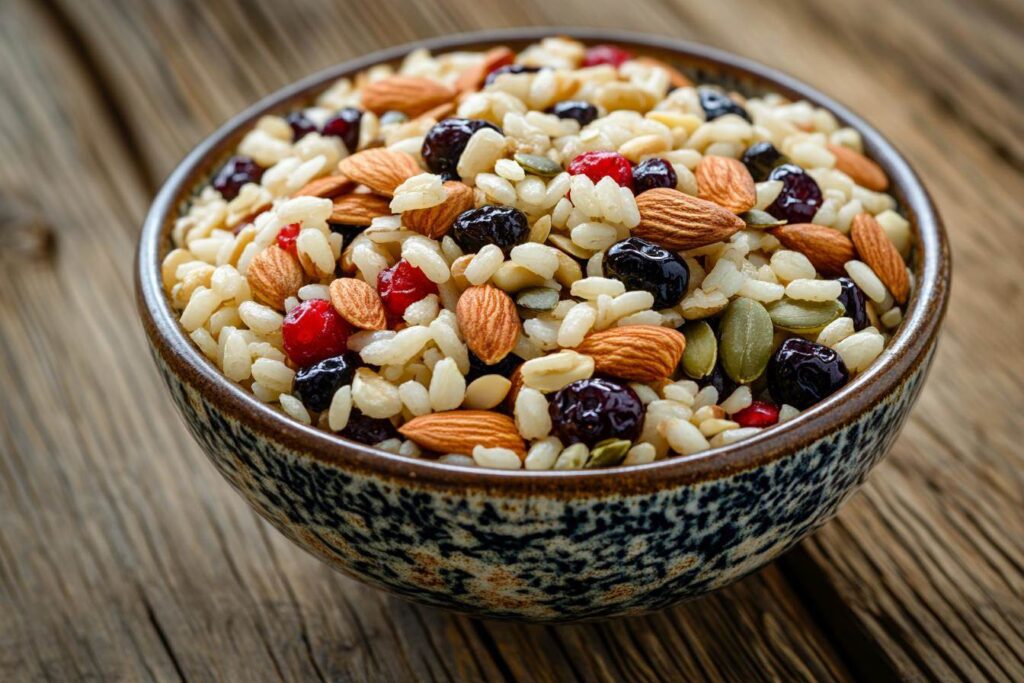
Health Benefits and Concerns of Puffed Rice
People celebrate puffed rice for its simplicity and low in calories profile, often choosing it as a well-rounded, light snack. However, it comes with certain nutritional limitations.
Low-Calorie Snack Option
At just 50 calories per serving, puffed rice is one of the lightest snacks you can find. It’s ideal for weight management plans, as its low caloric density allows for generous portions without significantly impacting daily calorie goals.
Its versatility also shines in savory or sweet recipes, offering a enjoyable crunch without excessive fats or sugars. For individuals seeking low-fat alternatives, puffed rice is an excellent option that fits into various dietary regimens. Pairing it with nutrient-dense ingredients like veggies, nuts, or seeds can make it more filling and nutritionally well-rounded.
Lack of Essential Nutrients
While puffed rice excels in simplicity, it falls short in nutritional richness. Without added fortifications, it lacks essential vitamins, minerals, and macronutrients like protein and fiber. This can make it less enjoyable and less nourishing compared to fortified cereals like Rice Krispies.
Are Rice Krispies Just Puffed Rice?
The debate over whether Rice Krispies and puffed rice are the same often boils down to their appearance and shared rice base. However, a deeper dive reveals major differences in their production, composition, and uses. Although both come from rice, they serve vastly different cooking and nutritional purposes, giving each its own clear identity.
Summary of Differences
Rice Krispies and puffed rice differ significantly in terms of texture, flavor, and nutritional content. Manufacturers sweeten, toast, and fortify Rice Krispies with vitamins and minerals, creating a more processed yet tasty option. On the other hand, puffed rice undergoes minimal processing, preserving its natural simplicity and lower calorie count. The toasting process of Rice Krispies adds crunch and sweetness, while puffed rice offers a lighter, airier texture that complements traditional and health-focused recipes.
Final Thoughts
So, are Rice Krispies just puffed rice? Not quite. While they share a common origin, their differences are clear enough to place them in separate food types. Rice Krispies shine as a versatile, tasty breakfast cereal and dessert base, whereas puffed rice excels as a light, adaptable ingredient in traditional and modern dishes.
Ultimately, the choice between them depends on your dietary needs, flavor choices, and intended use. Both have earned their places in kitchens worldwide, offering unique qualities that make them essential in their respective roles.
FAQs About Rice Krispies and Puffed Rice
Are Rice Krispies and puffed rice interchangeable in recipes?
Not entirely. While both are rice-based, their textures and flavors make them suited to different recipes. Rice Krispies’ sweet, toasted crunch works well in desserts like Rice Krispies Treats or as a topping for baked goods. Puffed rice, with its airy and neutral flavor, is ideal for savory snacks like bhel puri or as a light addition to soups. If a recipe relies on sweetness and structure, Rice Krispies are better. Conversely, if airiness and simplicity are key, puffed rice fits the bill.
Do Rice Krispies contain gluten?
The original Rice Krispies cereal is not free of gluten as it contains malt flavoring derived from barley, which has gluten. However, Kellogg’s offers a free of gluten version made from brown rice, specifically crafted for those with gluten sensitivities or celiac disease. Always check the label to confirm whether you’re buying a free of gluten product, especially if dietary restrictions are a concern.
Can I make homemade Rice Krispies?
Yes, you can make a home-made version! While copying the exact Kellogg’s formula isn’t feasible, you can create a similar crispy rice cereal at home by toasting cooked rice in the oven or a dehydrator until it’s light and crunchy. To mimic the sweetness, you can lightly coat the toasted rice with a sugar and malt syrup mixture. While not identical to store-bought Rice Krispies, this DIY method allows you to control the ingredients and tailor them to your choices.
Is puffed rice a healthy snack?
Puffed rice is a low in calories and fat free snack, making it a great option for weight management. With only about 50 calories per cup, it’s light yet filling. However, it lacks essential nutrients like protein, fiber, and vitamins. For a more well rounded snack, pair puffed rice with nutrient rich toppings like nuts, seeds, or fruits. When consumed in small amounts and combined with wholesome ingredients, puffed rice can be part of a healthy diet.
How should puffed rice be stored to maintain freshness?
To keep puffed rice fresh and crunchy, store it in an airtight container away from moisture, heat, and direct sun. A cool, dry pantry is the best spot. If puffed rice loses its crispness, you can revive it by lightly toasting it in a dry pan or oven for a few minutes. Proper storage not only extends shelf life but also preserves its airy texture, making it ready for use in recipes at any time.
What are some popular recipes using puffed rice?
Puffed rice is very versatile. In India, people make bhel puri, a popular savory snack, by mixing puffed rice with veggies, tamarind chutney, and spices. For a sweet option, they use puffed rice with melted jaggery to make crispy balls called murmura laddu. Today’s recipes also use puffed rice in granola mixes, cereal bars, or as a topping for yogurt or salads. Its flexibility makes it a favorite in both traditional and modern dishes.

